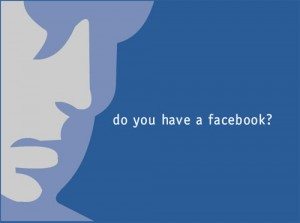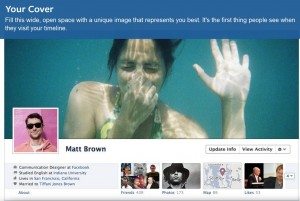 Facebook is giving me a headache but not for the reason you may think. Sure, it’s annoying when services you’ve grown accustomed to shake things up for no apparent reason (see the new Delicious, for example). But that’s their prerogative and we’d better get used to it. “Facebook will always be changing,” says Vadim Lavrusik who runs Facebook + Journalists. “If we didn’t, we’d look like Geocities.” Besides, what’s the point of carping about a platform that’s basically free?
Facebook is giving me a headache but not for the reason you may think. Sure, it’s annoying when services you’ve grown accustomed to shake things up for no apparent reason (see the new Delicious, for example). But that’s their prerogative and we’d better get used to it. “Facebook will always be changing,” says Vadim Lavrusik who runs Facebook + Journalists. “If we didn’t, we’d look like Geocities.” Besides, what’s the point of carping about a platform that’s basically free?
What’s giving me a headache is the quandary I’m now facing—maybe you are too—over what to do with my page on Facebook. For years, we’ve been advising journalists to separate their personal and professional presence on Facebook, which is exactly what I’ve done with NewsLab. But Facebook’s new “subscribe” feature now lets you create public posts on your personal page that everyone can see (if you allow subscriptions), while restricting others to friends or friends of friends.
The subscribe dilemma
There are several advantages to the new system but also some pitfalls. Once you allow subscriptions on your personal page, all of your friends are automatically subscribed to your public posts. If you’ve friended people only for professional reasons, you can now subscribe to their posts (presume they turn on subscriptions) and unfriend them. They’ll still see your public posts and they’ll never know you took them off the list. Lavrusik says Facebook deliberately chose the verb “subscribe,” which doesn’t carry the same implication as “friend.” For journalists, it’s certainly less of a stretch to subscribe to a public official’s posts than to become his or her “friend” or “fan.”
Another plus of the new system is that anyone whose friend request you ignore automatically becomes a subscriber to your public feed. You don’t have to do anything and they won’t necessarily know you didn’t accept their request. Nice.
Timeline trouble?

The changes don’t stop there. Facebook’s new timeline view gives users more space but makes information more accessible in ways that may be discomfiting. The good: Status updates are no longer limited to 420 characters; anything longer used to have to be sent as a note, but now a post can run up to 5,000 characters. And photos in the timeline are bigger and snappier. An album cover photo gets the most real estate so it’s important to select wisely.
The timeline also makes it easy to see everything you’ve ever posted by date, without scrolling to the bottom of each page and clicking “view older posts.” It allows you to add information retroactively (and get rid of it, too). The goal seems to be to make Facebook the repository of your entire life story, or at least the story of your online life. One critic says this change will make Facebook a stalker’s paradise. If you haven’t cleaned up your profile lately, there’s no time to waste. Employers are certainly going to use the new feature to learn everything about you.
Here’s another potential pitfall. The status update type defaults to whatever you used last, so you have to be careful not to send “friends only” posts to the whole world if your most recent post was public. One positive new feature is that you can change the type of post retroactively, so if you goof and you’re aware of it you can fix it.
Profile vs. page
But the “subscribe” feature only applies to personal profiles, not pages. And some of the features of pages—most importantly the traffic “insights”—don’t apply to personal profiles. So if you decide to use the subscribe feature and post both personal and professional items on your personal page, targeting them to different audiences, you won’t know as much about who’s reading what you write as you do now, using a page. See why my head hurts?
So what would you do? Should I activate the “subscribe” feature and use my personal profile to post professional stuff for public consumption? If I do, should I keep the NewsLab page on Facebook and cross post there? I welcome all suggestions!








